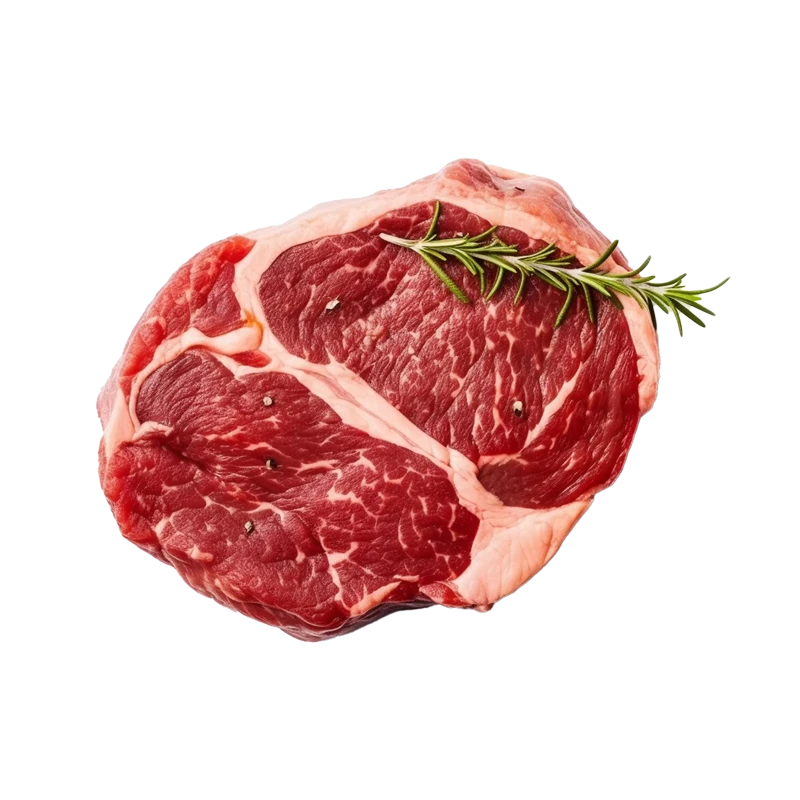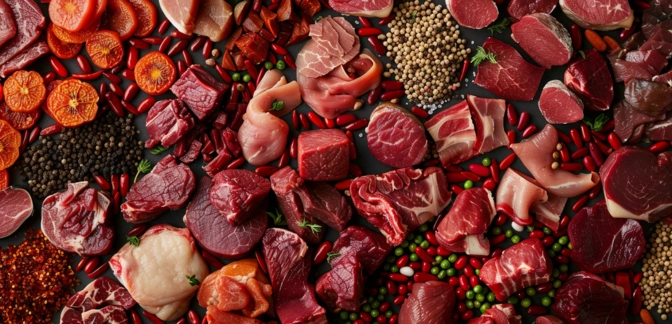Beef Ribeye Steak — Nutrients, Health Benefits, and Shopping Tips

Written by Listonic Team
Last update on September 4, 2024
Nutrients
Nutrition facts
Amount per 100 g
Calories
🔥 271 kcal
| Nutrition per: 100 g | Value | % Daily Value* |
|---|---|---|
| Carbs | 0 g | - |
| Fiber | 0 g | - |
| Sugars | 0 g | - |
| Glycemic Index | 0 | - |
| Protein | 26 g | 52% |
| Sodium | 55 mg | 2.39% |
| Total Fat | 18 g | 23.08% |
*The % of Daily Value (DV) tells you how much a nutrient in a serving of food contributes to a daily diet. 2,000 calories a day is used for general nutrition advice.
26 g
💪 High Protein Content
Key takeaways
Health benefits
- High in protein, essential for muscle growth and repair.
- Rich in healthy fats, which provide energy and support cell function.
- Contains essential vitamins and minerals such as iron, zinc, and B vitamins, which support overall health.
- Flavorful and satisfying, providing a delicious and nutritious meal option.
Health risks
- High saturated fat content which can contribute to increased cholesterol levels and raise the risk of heart disease.
- High calorie content which can contribute to weight gain if not consumed in moderation.
- Potential carcinogens from cooking methods like grilling or frying at high temperatures, leading to the formation of harmful compounds.
- Risk of contamination with harmful bacteria such as E. coli if not properly handled and cooked to a safe internal temperature.
How to choose beef ribeye steak
Rich marbling and a vibrant red color are markers of a quality beef ribeye steak. The fat should distribute evenly through the cut to enhance flavor and ensure tenderness upon cooking. Thick cuts are preferable for a juicy, flavorful result after cooking.
Avoid thin ribeye steaks or those with minimal marbling, as they tend to be less flavorful and can dry out. Pale steaks or those with a dull surface are likely not fresh and should be bypassed.

How to store beef ribeye steak
Ribeye steaks should be refrigerated and used within a few days for the best flavor. Freezing is effective for longer storage, where they can last up to six months. Keeping them in an airtight container or their original packaging helps preserve quality.
Extended exposure to air and room temperature can cause ribeye steaks to spoil. Refreezing ribeye steaks once thawed is not recommended, as it can affect their texture. Thawing in the refrigerator is the safest method to maintain their quality.
✅ Extra Tip
How long does it last?
Beef ribeye steak can last for 3-5 days in the refrigerator. If frozen, it can be stored for up to 6-12 months. Proper packaging, such as vacuum-sealing, helps maintain its quality over longer storage periods.
What to do with leftovers?
Leftover beef ribeye steak can be transformed into a variety of gourmet dishes. Slice it thinly and add to salads or sandwiches for a delicious meal. It’s also great for making a steak stir-fry with vegetables and rice.
Use ribeye slices as a topping for pizzas or flatbreads, or mix them into a pasta dish with a creamy sauce. If you have a lot of leftover ribeye, consider making a steak salad with blue cheese and walnuts, or adding the steak to a beef and vegetable stir-fry. Ribeye steak can also be used in a steak sandwich, served on a crusty roll with your favorite toppings. For a quick meal, reheat the steak slices and serve them over mashed potatoes or a grain bowl with roasted vegetables.
👨⚕️️ Medical disclaimer
How beef ribeye steak supports specific health conditions
Beef ribeye steak is a protein-rich cut that supports muscle health and aids in tissue repair. It also contains iron, which promotes blood health by preventing anemia, and B vitamins that support brain function and energy metabolism. Due to its higher fat content, ribeye steak should be consumed in moderation as part of a balanced diet to support heart health.
Discover products from other categories
Listonic Team
Fact-checked
Our editorial team checked this article to make sure it was accurate at the time of publishing it.
Get the top-rated shopping list app on your phone!







